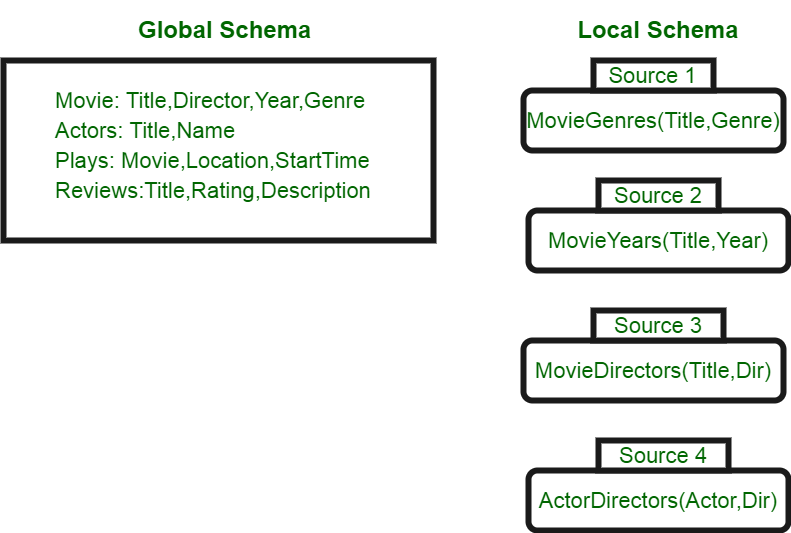Local as View (LAV)
Last Updated :
17 Aug, 2020
Local as View (LAV) is approach that view-based data integration systems (VDISs) use to perform data Integration i.e. searching and combining data from various sources. It describes each local schema as function over global schema. Here data sources are defined as views over provided schema. Schema is designed in such way that it maintains stability even when some data sources join or leave integration system. Hence LAV allows adding or subtracting of sources to integration system autonomously of other sources.
A Brief History :
Concept of LAV mappings was primarily introduced by Alon Y. Levy, Anand Rajaraman, Joann J. Ordille to overcome drawbacks of traditional views for data integration. Idea of LAV mapping is that each relation symbol of local schema is defined concerning global schema.
Earlier VDISs followed Global as View (GAV) approach where global schema is described in terms of local schema. Since global schema is expressed in terms of sources, global relations cannot represent any information not present in at least single source. Moreover, GAV-based systems do not permit addition of source to system independently of other sources.
Therefore, to overcome limitations of GAV approach, researchers came up with LAV approach.
Applications :
- It is used in practical data integration systems.
- It is used for Recovery Checking.
How it works ?
LAV can be thought of as source owners’ view of system by describing which data of global database are present in source. Local schema i.e. sources are described in terms of global schema using various expressions. Source provides expressions to generate information from pieces of global schema. With the help of Mediator, these expressions are collated to find all probable ways to answer query being fired.
LAV follows dual approach in which local relations are defined as views over global relations. Aim is to describe global schema in such manner that individual definitions do not alter when data sources join or leave integration system except for definitions of sources that are involved in alteration. Quality of this system is measured based on how well we have characterised sources.
In LAV local to global correspondence can be represented as set of mappings :

Where R
i is any relation of local schema, U
i is query over global schema and I is query that returns all attributes of R
i.
This can be illustrated by the following example :

Here,
MovieGenres(Title, Genre) ⊆ Movie(Title, Dir, Year, Genre)
MovieDirectors(Title, Dir) ⊆ Movie(Title, Dir, Year, Genre)
MovieYears(Title, Year) ⊆ Movie(Title, Dir, Year, Genre)
ActorDirectors(Actor, Dir) ⊆ Movie(Title, Dir, Year, Genre),
Actors(Title, Name)
Examples of Data integration systems that follow the LAV approach :
- Information Manifold –
Information Manifold (IM) is system utilized for browsing and querying of numerous networked information sources.
- DWQ –
DWQ integration architecture follows the LAV approach and defines Data Warehouse tables as well as source tables in terms of global schema. It uses rich modelling language at the conceptual level that extends Entity-Relationship(ER) data model. Thus it becomes fully compatible with various conceptual modelling tools.
- Picsel –
Picsel is information integration system build over sources that are dispersed and probably heterogeneous.
Advantages :
- Various sources can register independently of each other since source’s mappings do not refer to other sources in system.
- There is presence of loose coupling between local and global relations that enhances flexibility and robustness of data integration system when participating data sources alter frequently.
- LAV mappings enable quite detailed descriptions of the contents of data sources.
Disadvantages :
- Sources whose information is not present in the global schema cannot be modelled. Hence LAV systems have to frequently deal with partial answers.
- Existing LAV query re-writers only manage conjunctive query which is NP-complete.
- Declarative nature of LAV system makes query answering non-trivial job. So to attain answers for fired queries against global schema, it has to be translated to corresponding queries against local schema. This kind of problem is referred to as rewriting queries using views.
- Data Integration systems following LAV approach are comparatively more complex than the ones using GAV approach.
Like Article
Suggest improvement
Share your thoughts in the comments
Please Login to comment...